We all familiar with such a plant like Luk Batun. Its juicy green stems are often used in cooking, as well as in the recipes of traditional medicine. On the cultivation of Luke Batuna, we will tell about the intricacies of his sowing and care in this article.
Description of culture
This perennial plant in the people wears several different names: Tatarka, twin onions, and, of course, the bowbun. Culture refers to the bowl of the onions and is widespread in Asian countries, because Asia is considered to be the birthday of Batuna. Today, this plant can be found almost throughout Russia, Batun does not take root in the cold climate of the Far North.
This culture is presented in several varieties, each of which has different endurance and frost resistance. The most unpretentious appearance capable of transferring protracted frosts is considered Russian on-bobbin.
The peculiarity of the plant is that it does not have a large, well-developed root corner, which can be used in food, like, for example, onions. It is thick and juicy green stems with the greatest nutritional value. Since Batun refers to many years of cultures, the greatest crops he gives only 2-3 years of its development. At this time, on one bush can grow up to 35-40 shoots, among which there is also a seed stem, topped with a large white spherical inflorescence. The bow bud consists of a plurality of small flowers that exude a fragrance attracting insect pollinators.
Luk-Batun: Popular varieties
Gardeners most often land on their sites a few varieties of Luca Batuna, let's consider in more detail the features of each variety:
- "APRILEVSKY" onions is distinguished by islantic taste. It refers to the varieties of early ripening, due to the sweet task, is often used in fresh form, for example, in vitamin salads. The period of maturation of this culture is about 140 days. The advantage of the variety can be considered its stability before the majority of plant diseases.
- Middle maturation varieties include the Baye Verde onions. Its in the height of its stems grow about 40 cm, in diameter they reach 1.5-2 cm. The color of the stems are dark green, the surface of them is covered with a squeezed raid. The product has a sharp-sweet taste and a bright-pronounced onion smell.
- Another average variety of Batuna is "Russian Winter". The shoots of this type of culture grows up to 35 cm in height, their color is bright green, the surface has a thin layer of waxing. This variety is not too acute, but very juicy and fragrant. By the way, "Russian Winter" refers to frost-resistant varieties and gives good yields. For season 1 with bushes of this bow, you can collect shoots 2-3 times.
- The name of the variety "Giant" speaks for itself. The shoots of this bow are very large and long, juicy and fleshy. The height of the stems grow at 47-48 cm, the color of them is dark green, the surface of the shoots is covered with a dense flaw. "Giant" is also distinguished by frost resistance and allows us to harvest three times for 1 vegetation period.
- Early maturing variety called "Serge" yields a harvest faster batuna other varieties. At the height of the bush onion grows up to 50-54 cm, its stems have bluish-green tint, covered with a dense layer of waxy coating. The diameter of the pen is approximately 1.5 cm, and the weight reaches as much as 70 g. Frost variety "Sergei" well tolerated winter cold.
Welsh onion: the cultivation and care
Soil preparation for planting
Before planting Welsh onion, it is important to choose the right place to land. Culture prefers light soils: loam and sandy loam. For the cultivation of this plant is also well fit any fertile soil rich in humus. Welsh loves nourishing earth. There, where its roots, the soil should be saturated with fertilizers, moreover, it is desirable that it was the nitrogen compounds.
It is not recommended to cultivate the plant in the clay ground, because it is there simply not accustomed. But in too easy Welsh sand it feels great and is growing rapidly, but produces many stems, which leads to a lower quality harvest.
Soil acidity is also important. Onions do not like overly acid soils, so in the area with similar characteristics ground need to neutralize the introduction of lime, dolomite, shale ash or any other suitable material.
Welsh is often grown as a perennial, therefore, not to replant it every year, it is important you choose the right site for the garden beds. The soil at this site should be moderately moist but not waterlogged. If the terrain is rough, it is better to have the beds in such a way that they have a small slope in the southern or south-eastern side. Before you raise a Welsh onion, the ground beneath it is necessary to dig planting. Digging depth should be equal to 1 bayonet spades.
Features planting seeds Bunching onions
Welsh onion seeds sown in soil rich in organic matter. It is advisable to carry out landing in places where in previous years have grown tomatoes, cucumbers and herbs.
If the culture is grown as an annual, the sowing of seeds into the soil should be carried out in the first days of spring, and the next spring onion is completely removed from the beds. seeding density was about 2 g seeds per 1 m 2. If climatic conditions require frequent cold areas, it can be planted more densely Welsh, approximately 3 grams of seed per 1 m 2.
Luk-Batun grown from seeds can be sown in summer. At the same time, it is desirable to choose such dates so that the culture before the onset of cold weather and gain strength. There are cases when the bobun is planted late in the fall, but with such practices it is very important to choose the right time correctly. Culture, sown under winter, should not be as early as spring. If the sprouts break in winter, they will not survive in the frost.
Harvesting also directly depends on the timing of landing. For example, if the seeds were laid in the ground in June, the onions will be ready to collect approximately in the next May. In the fall of the Batun, it can be collected in July next year. The yield of the culture is approximately 5 kg of product with 1 m 2 Soil.
Batun-perennial planted in order to collect the harvest of green stems from it. As a rule, culture can be cut several times during the growing season. What is characteristic, when removing shoots, the green mass is growing more actively, and in each subsequent cutting of the harvest becomes more abundant. The last collection of greenery is carried out no later than 1 month before the onset of constant cold weather. It is necessary in order that the bow has managed to build new shoots and gain strength before the wintering. Luk-Batun is taken to cut for the first time in the second year after seeding. It is best to collect harvest when the length of the shoots will be at least 20 cm.
Consider some rules for the cultivation of Luke Batuna from seeds:
- In the middle lane with a moderate climate, the seed planting density should be approximately 1.5-2 g of sowing material per 1 m 2 Square. The width between the rows of the bed is 18-20 cm. The grains are plugged into the ground for approximately 1-2 cm.
- After sowing seed, the ground needs to be mulched. This is done with the help of a humor, which is covered with a garden, distributing the substance with a layer to 1.5 cm. Then the soil is slightly compacted.
- While the sprouts make their way through the ground, it is important to follow the maintenance of normal humidity in the soil and delete weeds on time. After the appearance of the splits of the bow, it is possible to break down, leaving only plants that are located at a distance of 2-3 cm apart.
- If the batun is used as an annual, often refuses from thinning, since a similar procedure leads to harvesting of shoots and a decrease in quality and quantity. In the case of many years of cultivation, the thinning is carried out until ultimately the distance between individual bushes is not 4-6 cm.
- You can engage in thinning when it is formed on the plants 3-4 of the present leaflet. In about the same period, the batun can be filled with fertilizers by making them to the ground during irrigation.
- You need to know that the bobber sprouts enough long time. After planting the sowing material, 2-3 weeks can pass. To speed up this process, the seeds need to prepare in advance, seeing them in cool water for a day. The liquid in which the onions seeds are kept, should be changed at least 2 times during this period of time. After a day, the water is drained, and the seeds are dried and getting started to lay the beds.
- After the end of the winter, the beds with a bow carefully examine and remove all the dried last year's shoots, and the soil discovered a little loose. After such a procedure, the soil warms up much faster, and new stems begin on the plants.
- At the same time, the Earth is saturated with complex mineral fertilizers.
- Luke-Batuna care implies constant maintenance of the beds in the neat and ropted state. There should be no weeds between the rows of Luke, and the soil should be loose enough and moderately moistened.
So that the culture gave a harvest in the earliest time, it can be sown under the film. In about the first half of April, the film shelter is installed on beds with a bhattern, and the film is removed not earlier than the first harvest will be collected. Rated under such shelter, the bow gives a harvest for 2-3 weeks earlier than with traditional cultivation in open soil. Yes, and the number of collected stems will be higher at least 1.5 times.
Luke Batuna Harvest
You can start the harvest when the length of the stalks of the plant reaches 20-30 cm, although biunas becomes suitable even earlier when its leaves are growing up to 10 cm long. The cleaning of Luke last year's sowing is produced in about aprint. By carrying out a similar procedure, the plants do not take place entirely from the ground, but gently cut off the shoots at the base with the help of a sharp knife. Each bush must be left for several arrows to form seeds.
At the end of the summer, the harvest is stopped and allowed to grow new leaves onions - so it is gaining strength, refined with nutrients and is preparing for wintering. When harvesting, do not forget about feeding. They are carried out after each cutting of the stems, bringing a cowper solution into the ground. The substance is bred in water in a ratio of 1: 6. You can also fertilize the battle of wood ash - it is also dissolved in water or put in the soil in a dry form during the loosening of the Earth. 1 M. 2 area shall be at about 150 g of ashes.
About 3 days before the harvest the onions, it is desirable to water, so that the stems were filled with moisture and were more juicy, while the plant itself has suffered pruning easier.

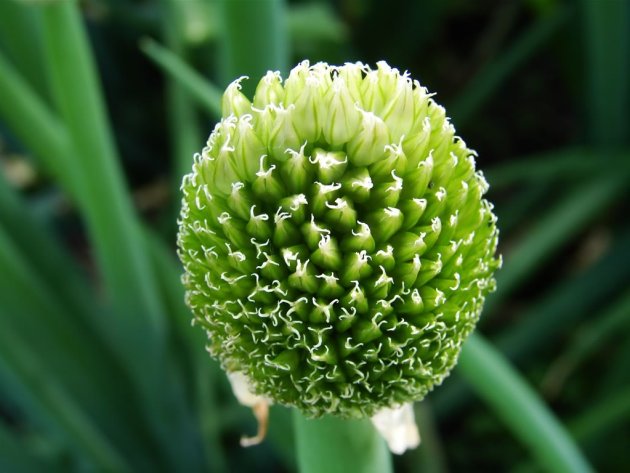
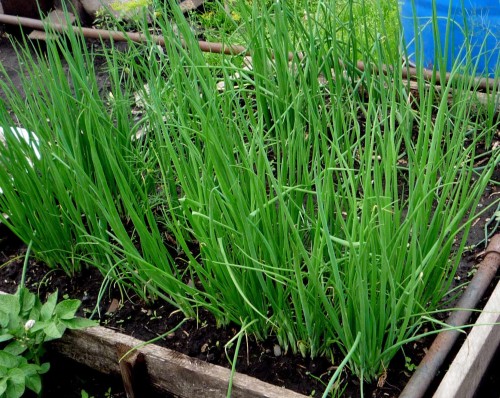
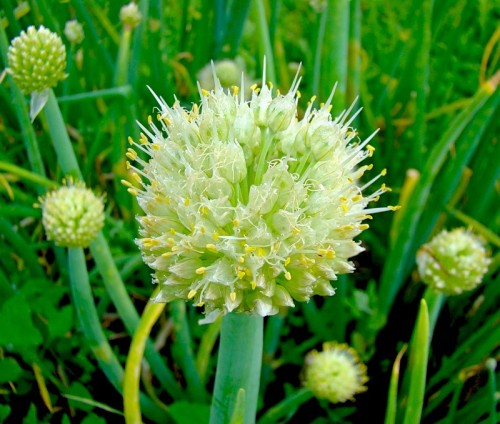

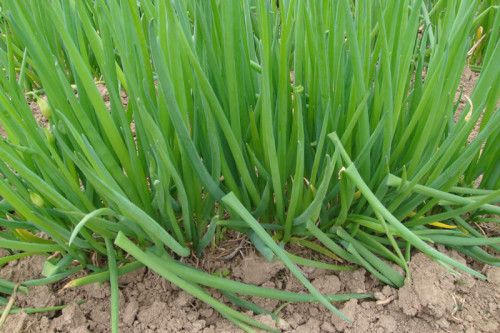
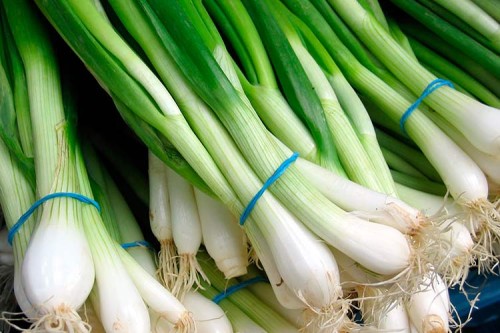












 Start a discussion ...
Start a discussion ...